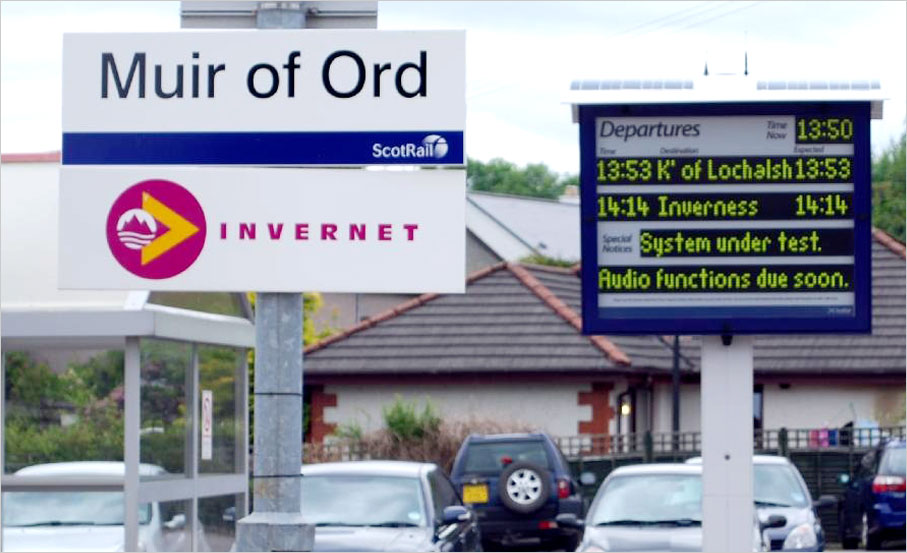|
The TSB was identified as an opportunity by two transport information companies, Nexus Alpha and JMW, as a means to bring both companies’ concepts for solar and wind powered customer information systems from the drawing board to reality. Having agreed upon a collective project for TSB the companies approached HITRANS to be their public sector partner in the CHRONOS consortium.
CHRONOS has allowed HITRANS to be involved in delivering groundbreaking CIS technology at public transport nodes in the Highlands and Islands. The renewable energy source for the CIS screens is a great fit with HITRANS objectives and the Highlands and Islands is an excellent proving ground for the technology.
Phase 1 of the project saw the introduction of solar and wind powered electronic information displays at bus stops in Moray in October 2009. The screens were installed at the following locations:
- Bridge of Tynet.
- Dufftown.
- Findhorn.
- Port Gordon.
Phase 2
Phase 2 of the CHRONOS project welcome ScotRail to the project partnership. This allowed the consortium to develop the screens to fit a rail station environment. To meet the needs of a rail environment the displays for ScotRail introduced some novel innovations: the introduction of ‘flip-dot’ technology using solar power and the first application of a novel power unit optimised for solar powered systems which is designed to ensure maximum benefit from the solar array and the least energy waste.
|
|
The power supply features a unique charge buffer technology that ensures the batteries are properly managed without sacrificing charging efficiency, a problem that is of particular concern where modest panels must be partnered with large battery capacity. The systems are based around the HERMES Lite computer which also drives an audio output which is triggered by button and/or the RNIB’s React radio triggers. The integrated support for DDA compliance is acknowledged by ScotRail as a significant benefit of these systems.
The new flip dot screens have been installed at the following locations:
- Keith Station Bus Stance.
- Golspie Station.
- Lairg Station.
- Tain Station.
- Invergordon Station.
- Alness Station.
- Muir of Ord Station.
- Beauly Station.

Three more flip dot CHRONOS screens will also be installed in 2011/12.
|